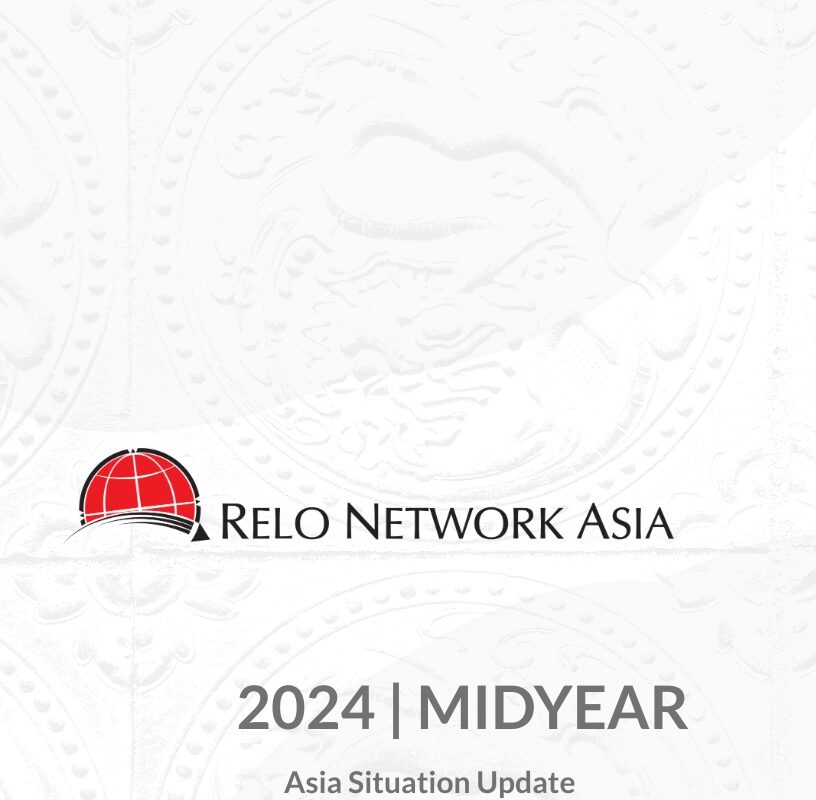Part III of the Assignee Experience | Service Delivery
In this ongoing series exploring the assignee experience during the destination service delivery, we look at services delivered after the quarantine period.
Our initial installment reflected on the new complications inherent in today’s pre-arrival and arrival processes while in the second installment we examine how the assignee experience may be impacted by the quarantine process that has been implemented by most countries in Asia. We finalize this series exploring the post-quarantine service delivery.
Service Delivery Post Quarantine:
The unpredictability of positive test results, of where and if quarantine will be required, and pre-testing that may result in a ban on boarding the departure flight also impacts the service delivery. Another challenge faced is the process of placing a new initiation and the reservation of the supply chain resources. In simpler days, the timelines were relatively well-established with the right service presented at the right time. When borders began to close, many assignees already introduced to the Destination Consultant in preparation for arrival were placed on hold. Initiations, in some cases, continue to be processed and assigned despite the lack of movement forward with visa approvals and established arrival dates. On the one hand, this is good because a visible pipeline of assignments permits planning for the service delivery process. On the other hand, the balance of pre-arrival consultation to service delivery has been upended.
 Pre-pandemic, once an assignee’s arrival date was known, the time and resources of the Destination Consultant and any supply chain partners would typically be reserved. If the arrival date were July 1, then service delivery would either start that day with the airport meet and greet, or it would begin within a day or two. With the unexpected challenges that may impact the assignee’s ability to board the plane, the length of the arrival process, and the quarantine procedures, those types of reservations create more issues than they solve. It has become increasingly challenging to set schedules and assignee expectations of the days and time for service delivery. Flexibility now needs to be part of the planning process with later-date confirmation of exact dates and times for in-person meetings.
Pre-pandemic, once an assignee’s arrival date was known, the time and resources of the Destination Consultant and any supply chain partners would typically be reserved. If the arrival date were July 1, then service delivery would either start that day with the airport meet and greet, or it would begin within a day or two. With the unexpected challenges that may impact the assignee’s ability to board the plane, the length of the arrival process, and the quarantine procedures, those types of reservations create more issues than they solve. It has become increasingly challenging to set schedules and assignee expectations of the days and time for service delivery. Flexibility now needs to be part of the planning process with later-date confirmation of exact dates and times for in-person meetings.
Beyond the assignee’s schedule, there can be additional complications due to the availability of service partners and access to resources. A program schedule must take into consideration as well the real estate, bank managers, store clerks, government officials, and school administrators. Not all housing developments will permit non-resident visitors, making viewing properties more labor-intensive, if not impossible, for some units. When viewing is allowed, there are sometimes restrictions on the number of people permitted inside, which can cause delays if multiple family members are included in the decision process.
 There are also many enhanced safety and tracing procedures in place than previously. Gaining access to a building may include multiple steps. Temperature and health declarations at the entry to the compound and additional health checks at individual buildings can occur. Requirements for scanning QR codes or in China, scanning health codes, for tracking purposes can also add to the time it takes to things. The result is that less can be accomplished in a day. It could now take 2 – 3 days to see the number of home options that once were viewed in a single day.
There are also many enhanced safety and tracing procedures in place than previously. Gaining access to a building may include multiple steps. Temperature and health declarations at the entry to the compound and additional health checks at individual buildings can occur. Requirements for scanning QR codes or in China, scanning health codes, for tracking purposes can also add to the time it takes to things. The result is that less can be accomplished in a day. It could now take 2 – 3 days to see the number of home options that once were viewed in a single day.
Education is a critical element of a relocation, however, many schools are either closed or are not permitting tours. Touring can sometimes, but not always, be done virtually, and the availability depends on the school and the location. It was always important to begin the school search as early as possible. Still, now it is critical with lengthened timelines for online meetings with education administrators, gathering of the application materials, and any required testing.
Services that requires a human presence, including opening bank accounts, obtaining mobile phone and exchanging a driving license require more time than before. Pricing, service scopes, and timeframes developed and relied upon as recently as January are now proving to be less effective today. But what if a human presence is removed? Either the face-to-face support by the Destination Consultant or by the physical presence of the assignee?
Up until recently and through today, traditional destination services remain the norm. We have created programming for emergency arrivals and departures, contactless services, and DIY+ remote support and virtual programs, however, except for the emergency departure services, these non-traditional programs have so far rarely been requested by clients. There have been substantial discussions, but little apparent alteration in the orders being placed.
What we have noticed is that some clients are using “virtual” and “contactless” as interchangeable terms. Both provide services without in-person contact, yet they are quite different in almost every other way. The lack of a global standard definition is quite understandable, considering the newness of the service options.
 Virtual is being used predominantly as an overall term for services that have little or no contact. The name, however, does have some existing connotations that can be misleading. Virtual services typically bring “lower cost”, “limited service” and “convenience” to mind. Like Relo Network Asia, many destination services companies offer virtual services via website portals and applications as either standalone virtual programs or supported by remote email/phone support. The costs are lower because the resources it takes to deliver the program are fewer. The services are technically on-demand and likely living on the assignee’s phone for extra convenience, but the service is more of a DIY by design.
Virtual is being used predominantly as an overall term for services that have little or no contact. The name, however, does have some existing connotations that can be misleading. Virtual services typically bring “lower cost”, “limited service” and “convenience” to mind. Like Relo Network Asia, many destination services companies offer virtual services via website portals and applications as either standalone virtual programs or supported by remote email/phone support. The costs are lower because the resources it takes to deliver the program are fewer. The services are technically on-demand and likely living on the assignee’s phone for extra convenience, but the service is more of a DIY by design.
What many clients are requesting today is to limit the face-to-face contact while delivering a traditional high-service level destination program—otherwise known as a contactless service. The realities of that are increased time and resources necessary to deliver the same experience.
At least in the US, the past few months of television commercials have been filled with ads by car companies offering contactless buying or servicing options. But there is a difference between selling a car virtually and delivering a people-based service virtually. When the person, the location, and the knowledge is the “product” being purchased, removing the in-person contact adds complications instead of the simplification. Contactless programs, in reality, require more time and coordination while delivering a substantively equal service and support experience. They are an apples-to-apples comparison with traditional destination services while virtual services are not. Be sure to clarify on both the buying and service delivery end the intended scope of service behind the term being used.



